Archaeologists have found evidence that as far back as the Neanderthals, humans have been using various things to change the color of both hair and skin. Ancient Gauls and Saxons dyed their hair various vibrant colors to show rank and to instill fear into enemies on the battlefield. Babylonian men sprinkled gold dust into their hair. By the time of the ancient Egyptians, Greeks and Romans, plant and animal matter were being used on a regular basis to color hair. The very first mixtures could only darken the hair, but methods were found to bleach hair blond, often by exposing the painted hair to sunlight for hours. Throughout history, various means have been used to produce a full spectrum of hair dye colors.
Hair Dye through the Middle Ages, the Renaissance and the Victorian Era
In the Dark Ages, red hair first appeared as the result of a genetic mistake. For many years, people with natural red hair were subjected to suspicions of witchcraft. However, in the 16th Century, Queen Elizabeth I’s natural vibrant red hair made red hair more acceptable, and soon hair was being reddened with items such as henna, which dated back to the ancient Egyptians. During the Baroque period, when elaborate powdered wigs were popular, the colors ran the gamut of pastels, from pinks and yellow, to even blue. Blond hair continued to be desirable, with potassium lye or caustic soda being use to bleach the hair. Victorian women used large hats with an open top to expose their treated hair to the strong sun. At the same time, gray hair was popular, bringing back hair powder to heighten the affect. For a time, silver nitrate was used to darken hair until overuse resulted in a purple color. It was this purple result that would eventually lead to the creation of the first synthetic hair dye.
Synthetic Hair Dye
In the 1800s, chemists discovered para-phenylenediamine (PPD) and its use in the creation of synthetic dye. At the same time, it was found that hydrogen peroxide was a gentler and safer chemical for hair bleaching. These two discoveries paved the way for Eugene Schueller, who created the first commercial chemical hair dye, which he christened “Aureole.” That product would go on to be known as “L'Oreal.” The double-process for dying hair blond soon followed, and in 1932 hair dye was further refined by Lawrence Gelb who created hair dye that actually penetrated the shaft of the hair. His company would be called “Clairol.” Later, in 1950, he would introduce the first one-step hair dye product that actually lightened hair without bleach. This ushered in the modern era of hair dye, including the ability for hair to be dyed at home.
How Hair Dye Works
Natural hair color is determined by genetics, which determines how much of two pigments are contained in the cortex of the hair. The percentage of each pigment present determines hair color, but gray hair has no pigment at all. Today’s hair dye products work with this pigment, removing the natural color and then adding the new color. This process is now normally accomplished in one step. Depending on the formulation of the product used, the color change can be temporary–the hair gradually reverting to its pre-dye color, or permanent, wherein only a color removing process or a new dye color can change the hair's appearance. Hair dye does not affect the new growth of hair, which will appear as the original natural color as it grows in.
Types of Hair Dye Available Today
An infinite array of color is available today, from a vast selection of natural shades, to colors that don’t occur in nature at all. Dyeing one’s hair still causes damage to the hair, but thanks to numerous conditioning products, most of this damage can be minimized. There are four major variations in hair dye today:
Temporary Color–More like a paint or hair mask, these colors are applied on top of the hair and do not penetrate the hair shaft. Mostly available in bright and exotic colors, temporary hair colors will wash out of the hair.
Semi-Permanent/Demi-Permanent Color–This dye also coats the hair but unlike temporary color, it chemically bonds with the hair. It cannot be used to lighten hair, but adds vibrancy to the color. Semi-permanent color will eventually wash out. Demi-Permanent color slightly penetrates the hair shaft, so it lasts longer.
Permanent Hair Color–Because it contains both ammonia and peroxide, permanent color allows dye to penetrate the cortex and break up the natural melanin. It fundamentally changes the hair, and cannot be washed out, although it can be subject to fading due to improper application, damage to the cuticle (also called over processing) and even exposure to sunlight.
The Future of Hair Color
The addition of silicon and other similar ingredients to conditioners had greatly reduced the amount of damage caused by repeated dyeing of the hair. Constant research continues to produce products that work at hair’s molecular level. Eventually, lasers may be used to color hair, as experiments have shown them to be very effective at removing hair color. However, controlling a laser to the degree needed to make subtle changes in a safe way to human hair on a living person may be still be science fiction.
Related Articles
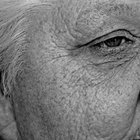
Facts on Natural Hair Changing Color

How Often Can You Color Your Hair at ...

Black Hairstyles of the 1800s
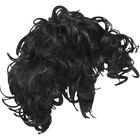
Famous Men Who Wear Toupees

Traditional Uses of Cuscuta

What Is the Meaning of White China Jade ...
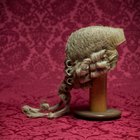
British Wigs in the 1700s

What Are the Causes of Graying Hair?
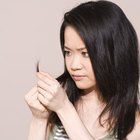
Dominant & Recessive Hair Colors
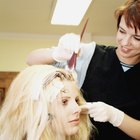
Difference Between Sebastian ...

About Hair Bleaching
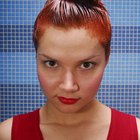
How to Put Conditioner in Permanent ...

How Are Hair Colors Inherited?

Who Invented Hair Weaves?

Chi Silk Infusion Ingredients

Can Supplements Reverse Gray Hair?

Difference Between Permanent Hair Color ...

What Is Dye Made From?

How Often Can You Color Hair Without ...

What Additives Are in Flour?
References
Writer Bio
Noreen Braman has been writing professionally since 1987. She has contributed to publications such as "GRIT," "Modern Dad," "DayCare and Early Education," "Women’s Harpoon," "Priority Parenting," "New Brunswick Business and Entertainment Journal" and "NJ TechNews," as well as several fiction and poetry anthologies. Braman earned a special publishing certificate from the Institute of Children's Literature and a design certificate from the Sessions School of Design.